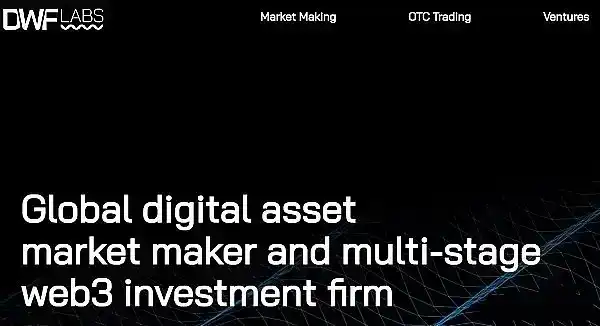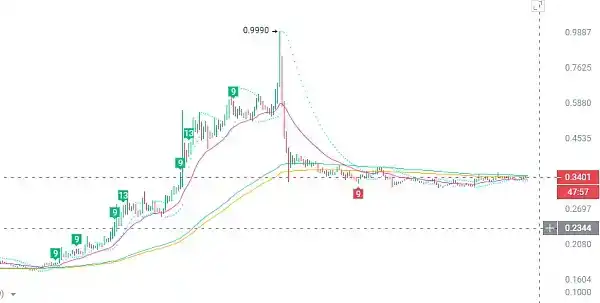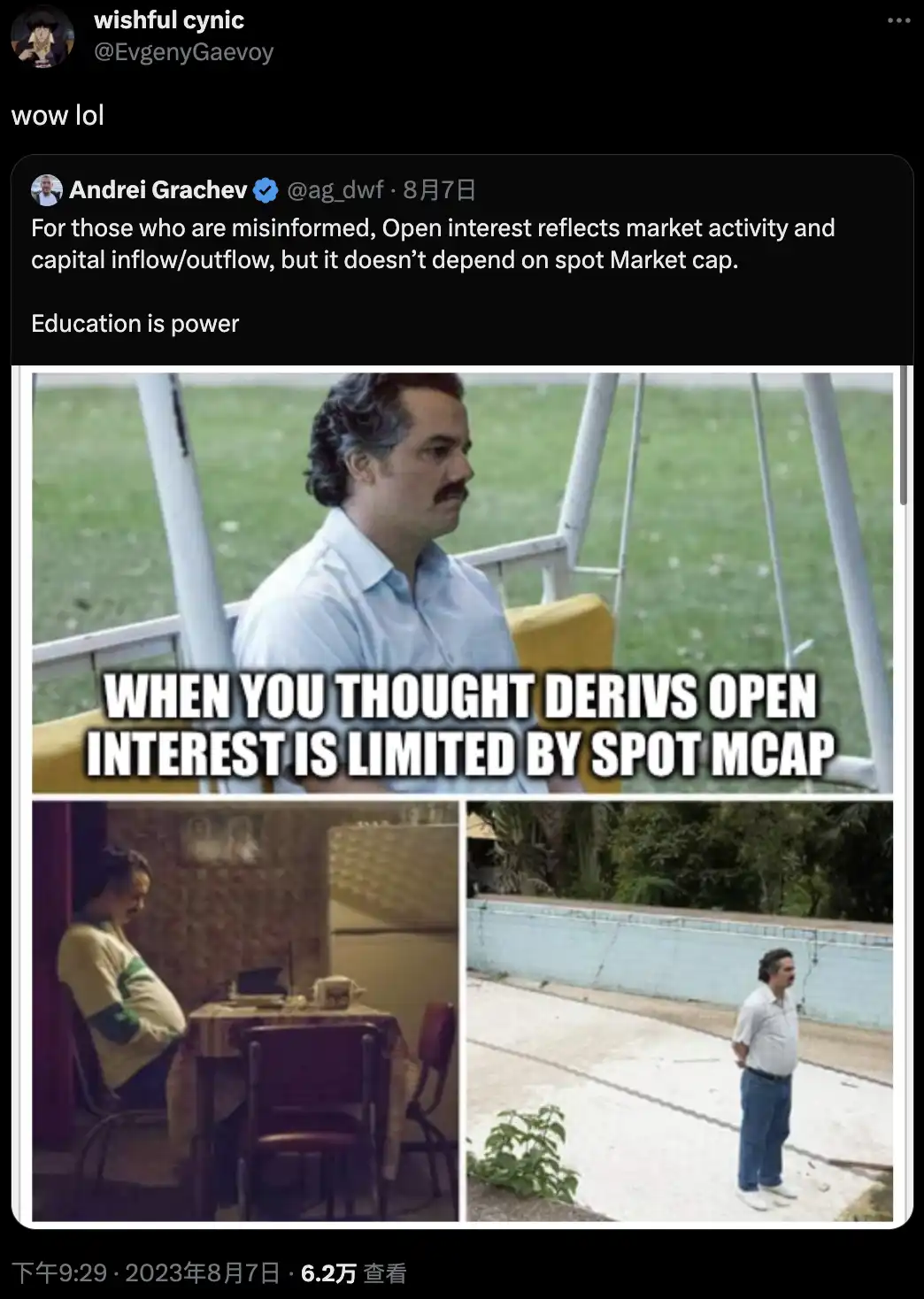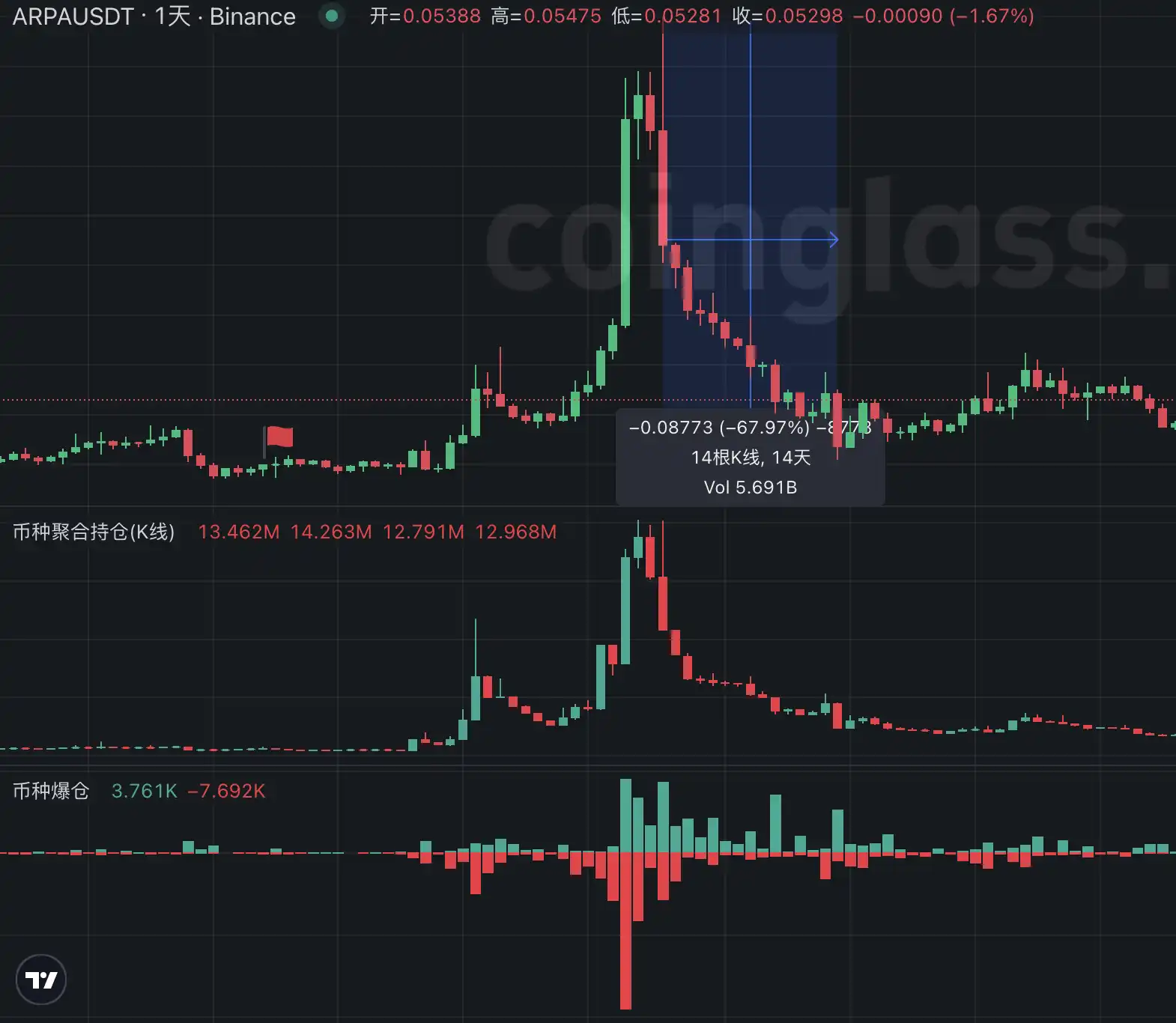CYBER Retail Investors vs. Market Makers: The Brick Moving and Trading Logic of Barbaric Market Makers
Author: 0x26, Luccy, BlockBeats
Editor: Jaleel, BlockBeats
This weekend, some retail investors and market makers just went through a "war." On the South Korean exchange Upbit, the price of Cyber was pushed up to $37, with a premium rate reaching 167%. On the Binance platform, the price of CYBER was temporarily reported at $13.8, while CyberConnect issued an emergency proposal [CP-1] to unlock 10.88 million CYBER, equivalent to $300 million, an astonishing amount. Amidst the community's panic, the official claimed there was a data editing error, and the actual unlocked amount was 1.08 million.
Last night, a KOL in the crypto circle shared his painful experience on social media, resonating with many. Due to the astonishing rise of Cyber, he had repeatedly shorted and gone long, ultimately leading to a loss of a million. What exactly happened in this farce? BlockBeats has compiled the events and the market maker logic represented by DWF behind CYBER.
The Farce of CYBER
As the only token issued by CyberConnect, CYBER was sold to the public via CoinList on May 18 this year. Just three months later, the opening price surged more than three times. On August 21, Binance launched CYBER 1-20x perpetual contracts, and then the South Korean crypto trading platform Upbit listed CYBER on August 22.
On the day CYBER was listed on Upbit, according to Lookonchain monitoring, DWF Labs increased its holdings by 170,000 CYBER from Binance at an average price of $4.5, amounting to about $770,000. By August 30, the value of this increased CYBER had risen to $1.26 million.
The Premium of CYBER
The "war" between retail investors and market makers officially began on August 31.
At that time, the Upbit trading platform wallet address held about 3.6 million CYBER, surpassing Binance to become the largest holder of CYBER, accounting for 33% of the token's circulating supply. At 3 PM that afternoon, Binance suspended CYBER token withdrawals due to insufficient ETH network balance. Subsequently, on-chain data showed that DWF Labs transferred 40,000 CYBER to the South Korean cryptocurrency exchange Bithumb, valued at about $360,000.

On September 1, the farce escalated, with CYBER on Upbit priced more than 30% higher than on Binance. In just 24 hours, DWF transferred 170,000 CYBER to Bithumb, valued at about $1.46 million.
On September 2, the farce reached its climax. The Upbit wallet address held 3.947 million CYBER, the highest amount. The price of CYBER on mainstream CEXs continued to rise, and the price on Upbit maintained a premium, soaring from 30% to 167%, reaching $37.1.
A User, 87% of the Votes
Unable to contain themselves, CyberConnect officials released an emergency proposal [CP-1], hoping to unlock 10.88 million CYBER in advance to ensure liquidity balance across Ethereum, Optimism, and BNB Chain networks.
Due to the urgency of this proposal, CyberConnect did not adhere to the DAO's 7-day voting period policy, and the voting ended at 4 PM that afternoon. After the emergency proposal [CP-1] was passed, the price of CYBER on Upbit plummeted below $20. Starting at 8 PM, CYBER began to be transferred out of the Upbit wallet address. A total of 3.6 million CYBER was transferred out, most of which flowed into Binance.
Although CyberConnect officials released a statement on September 3, claiming that there was an editing error in the data of the emergency proposal [CP-1], and that the actual unlocked amount was not 10.88 million but rather 1.08 million, they quickly revoked the proposal and promised to introduce security measures to prevent similar incidents from happening again.
However, it was clear that panic, uncertainty, and skepticism about CYBER had already fermented in the market. Meanwhile, the community discovered that the voting numbers displayed in the emergency proposal [CP-1] highlighted the centralization issues of the project. According to the snapshot, a single user cast votes that accounted for 87% of the total voting volume.

This not only reflects the centralization issue of a single project but also demonstrates that the so-called DAO organizations in today's crypto circle have hardly considered governance issues, with emergency proposals being rushed through, a single user holding 87% of the votes, and ultimately shutting down a passed proposal due to "data editing errors."
No wonder the community expressed that "the so-called DAO organizations in the country have almost no governance, and are basically just playing house."
DWF: A Compound Operation Model of "Investment + Market Making"
Beyond the issues of project centralization and token control, the farce surrounding CYBER cannot overlook the presence of market makers.
From the initial $4.5 on the day of listing to the peak of $37.1 (with a 167% premium over Binance), and then falling back to $12.55 (with a 14% premium), in this bizarre rise and fall, one side saw continuously refreshing expectations of increases and premiums, while the other side faced an impending red line that could arrive at any moment. While many may have noticed the signs of market maker involvement behind this, more were attracted by the insane price increases, becoming liquidity providers in a Pump and Dump scheme.
As previously introduced by BlockBeats, DWF is a global high-frequency trading company in cryptocurrency, which has been trading spot and derivatives on over 40 top trading platforms since 2018, ranking among the top 5 in global cryptocurrency trading volume.
DWF Labs' official website previously stated, "Regardless of market conditions, DWF Labs invests in an average of 5 projects per month." Since March, DWF Labs has indeed been sweeping the secondary market at an average rate of 5 projects per month, sparking heated discussions in the community, with many believing that DWF is not genuinely investing but merely holding tokens for market making. DWF Labs partner Andrei Grachev also responded, "Besides investing, we usually bring additional support," effectively acknowledging this compound operation model of "investment + market making," and the official website has directly advertised this type of service.

DWF Labs clearly states that it is a global digital asset market maker and a multi-stage web3 investment company, engaged in high-frequency cryptocurrency trading, and currently trading in spot and derivatives markets on over 40 top exchanges. DWF Labs also mentioned that DWF can provide cutting-edge market-making execution capabilities, creating trading volume and providing healthy liquidity for projects as a service. Currently, they have integrated with the top 40 trading platforms, trading over 800 currency pairs, including both spot and derivatives.
Through market making, DWF claims to allow other market participants to trade project tokens with minimal price impact, thereby increasing market depth and boosting investor confidence in the project's market liquidity.
In choosing market-making tokens, unlike Wintermute, which focuses on fundamentally sound European and American blue-chip projects, DWF Labs primarily targets East Asian projects and various new and old sentiment themes. Many institutions and investors have begun to view tokens like YGG, DODO, C98 as part of DWF Labs' market-making patterns, and have been creating investment maps of their layouts, as well as some tokens that have yet to surge.

In September 2022, MXC received a multi-million dollar investment from DWF, but since the beginning of this year, MXC's token price has performed poorly, dropping from around $0.033 at the beginning of the year to $0.019.
The YGG Incident in the Bear Market
It is said that Gamefi is dead, but at the beginning of last month, the guild-type project YGG (Yield Guild Games), which was founded on Gamefi, put on a "Mario Jump" performance after being listed on major mainstream trading platforms like Binance, OKX, and Bybit.
In just 6 days, it surged nearly 5 times, only to drop 60% within 4 hours, triggering over $10 million in liquidations.
Although there is no direct evidence indicating DWF's involvement in this pump and dump activity, on-chain wallets marked as DWF by multiple on-chain institutions did receive YGG tokens, and DWF did co-lead a $13.8 million financing round for YGG in February 2023—through the sale of tokens. In February 2023, DWF Labs and a16z co-led the financing for the blockchain gaming guild Yield Guild Games (YGG), raising $13.8 million through token sales.
Starting from August 6, DWF Labs released a series of funding decision announcements regarding YGG, DODO, and C98, prompting the three tokens to continue climbing even after already having risen. Among them, YGG saw the largest increase of nearly 50% in the second phase. However, all three experienced a rapid decline after just one day of trading, with YGG seeing a maximum drop of about 70%.

The most direct feeling comes from DWF's managing partner Andrei Grachev's recent tweets about YGG. Rarely posting, Andrei tweeted twice about YGG, the first on August 6 congratulating YGG on its listing on Binance and analyzing the trading depth and order situation of the YGG token.
Shortly after YGG's sharp decline, the CEO of Wintermute, who had previously had a falling out with DWF, mockingly replied to Andrei's tweet.

Of course, this CYBER incident is somewhat different from YGG; DWF does not seem to have directly manipulated the CYBER event but played a role akin to arbitrage or insider trading, which is different from the nature of the YGG incident.
"Pump Then Dump," DWF's Market Making Strategy
Although DWF has boasted that it can protect projects from the threats of "pump then dump" price attacks and extreme price volatility, there have been multiple instances of "pump then dump" in its portfolio, aside from the controversial YGG.
In these projects, just a month after DWF's investment, "pump then dump" incidents occurred, taking ARPA and Agld as examples.
On April 25, DWF announced its investment in ARPA Network, and subsequently, the price of ARPA tokens more than doubled within a month, only to drop nearly 40% on the day of the highest price. During this period, the holdings of ARPA tokens on mainstream trading platforms surged, triggering a large number of liquidations. The holdings returned to normal after a period following the price drop. The marked points in the chart below indicate the investment announcement time.

Data Source: Coinglass
On June 22, Adventure Gold DAO announced receiving DWF's investment, with DWF committing to purchase AGLD tokens worth seven figures. Subsequently, within a month, AGLD tokens rose nearly 2 times, and the next day after reaching the peak, they dropped over 40%. Similarly, during this period, AGLD tokens on mainstream trading platforms saw a surge in holdings, leading to a large number of liquidations. The holdings returned to normal after a period following the price drop. The marked points in the chart below indicate the investment announcement time.

Data Source: Coinglass
Notably, AGLD commented on this matter, seemingly hinting at something.
"On around July 22, the top 3 accounts on Bybit's 24-hour leaderboard had all joined in the past 5 days, trading only AGLD and making seven-figure profits. From this, we can speculate who did it…"

Corresponding to the wild fluctuations of YGG, ARPA, and AGLD is the community's confusion. Taking AGLD as an example, even after experiencing rollercoaster-like movements that generated massive profits for related interest groups, the number of people in AGLD's Discord community remains below 200. Many helpless retail investors still do not know what happened…
Market Response: Don't Go Against Market Makers
To attract more commercial clients, DWF Labs mentioned in its "Market Making" business that it "will provide efficient and sustainable liquidity for our partners." Therefore, the price movements of YGG, DODO, C98, and other previously market-made tokens just happen to validate DWF Labs' business level and service quality.
Returning to the CYBER farce, since major trading platforms in South Korea only support deposits and withdrawals of CYBER on Ethereum, the demand for CYBER in the South Korean market surged, leading to price discrepancies. At this time, as a skilled market maker, DWF Labs seized the opportunity, withdrawing 170,000 CYBER from Binance as CYBER was listed on Upbit, initiating arbitrage.
It can be seen that DWF Labs has already made markets for two of them, YGG and C98; it remains to be seen whether the next token to experience wild fluctuations will be among its recently invested projects.
As retail investors in the crypto circle, our attitude towards market makers is very complex. On one hand, the crypto industry needs the existence of market makers, and the mechanisms related to token market makers are not inherently malicious. The problem is that these mechanisms usually do not disclose information to retail investors.
On the other hand, the existence of market makers has caused significant losses for retail investors. Returning to what we mentioned at the beginning of the article, in that tweet with over 60,000 views, the retail investor KOL who lost a million wrote at the end of the tweet, "Don't go against market makers," serving as a warning to everyone in the crypto circle.











